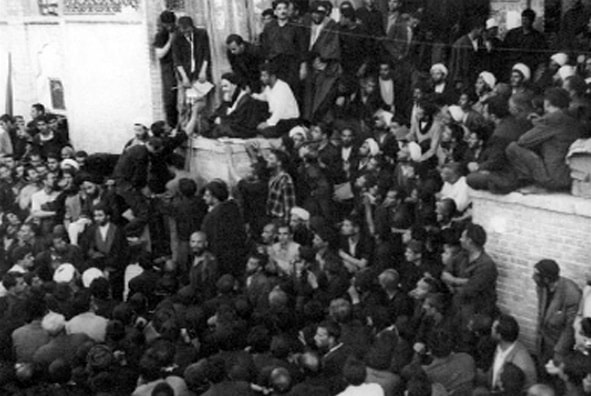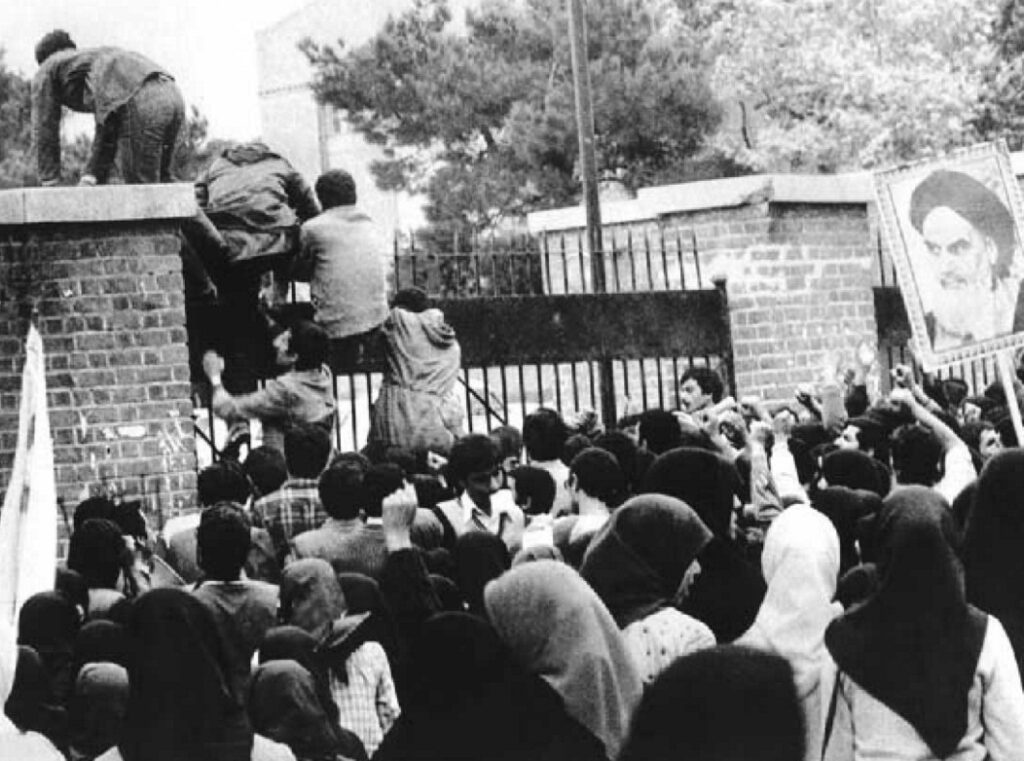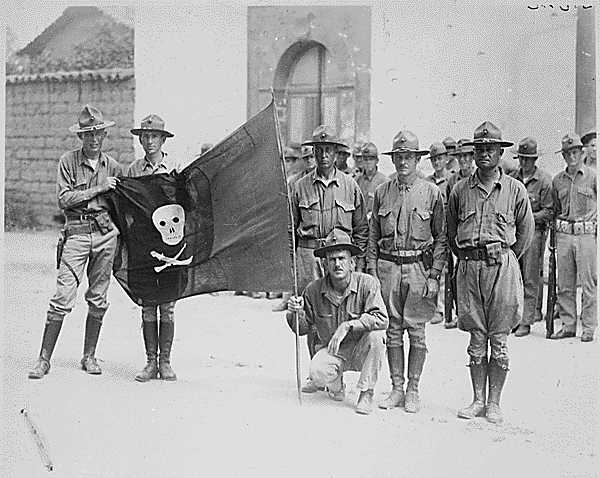42 years ago today, militant students that supported the new Islamic regime of Iran stormed the U.S. Embassy in Tehran, taking 90 diplomats there captive and touching off the 14-month Iran Hostage Crisis.
The spiderweb of events that preceded (and for that matter, followed) the crisis is worthy of a dissertation, but the situation in Iran that led to this event can be crudely summed up as the U.S. getting mixed up in an Iranian power struggle. The U.S.-backed Shah of Iran, Mohammed Reza Pahlavi, had ruled with an iron fist since 1953, and used secret police to suppress his plentiful Islamist and communist opponents. One very popular cleric, Ruhollah Khomeini (not to be confused with current Supreme Leader Ali Khamenei) had lived in exile from Pahlavi’s rule in Iraq and France for almost 15 years. When Pahlavi’s political situation deteriorated and the ball was rolling on the Iranian Revolution, he fled the country in January of 1979. Khomenei returned soon after to seize power, and by April, established the Islamic Republic of Iran.

Hope you’ve got all of that, because now things get complicated. Months later, word reached Iran that President Jimmy Carter had allowed Pahlavi, who was dying of cancer, to enter the United States from Mexico for medical treatment. This enraged Islamic fundamentalists that already harbored ill will toward the West. A militant group known as the Muslim Students of the Imam Khomeini Line invaded the embassy complex and captured 90 employees inside. All non-Americans, and well as 14 Americans were released for various reasons, but 52 U.S. embassy workers were held hostage with demands from the militants that Pahlavi be extradited to Iran for trial (and presumably, execution).
President Carter sought out a diplomatic solution that didn’t exist with Iran’s new government for months. Finally, under significant pressure for being perceived as weak on the world stage, Carter authorized a rescue mission in April of 1980. Operation Eagle Claw, a collection Rangers, Special Forces, and a very young Delta Force, was plagued by poor inter-service coordination and mechanical failure of several RH-53D helicopters. The mission was aborted. Though the Shah died in July of 1980 in Egypt, the hostages were spitefully held until Jan. 20,1981, just minutes after President Reagan concluded his inauguration speech. After 444 days, all 52 captives were free and the Iran Hostage Crisis was over.
Related: Why does America need Delta Force? An operator’s perspective
As for Operation Eagle Claw, the mission itself was embarrassing for the military, but also was the catalyst for change to build the armed forces as we know it today. President Reagan became Commander-in-Chief in 1981 with a renewed emphasis on defense and foreign policy. Increased attention and funding made it possible to address the failures revealed by Eagle Claw, and out of it was born a stronger and more communicative special operations community. SOCOM and the Joint Special Operations Command (JSOC), SEAL Team 6, and the 160th SOAR (the Night Stalkers) are all a direct result of the lessons learned from that operation.
Read more from Sandboxx News:
- Iraqi Popular Mobilization Forces condemn US airstrikes
- Bunker-busting GBU-72 clearing hurdles in USAF testing
- The messy way the Marines joined US Special Operations
- What you need to know about Israel’s inclusion in the US Central Command
- When Israel stole Iran’s entire nuclear archive in one night
Feature image: Wikimedia Commons




